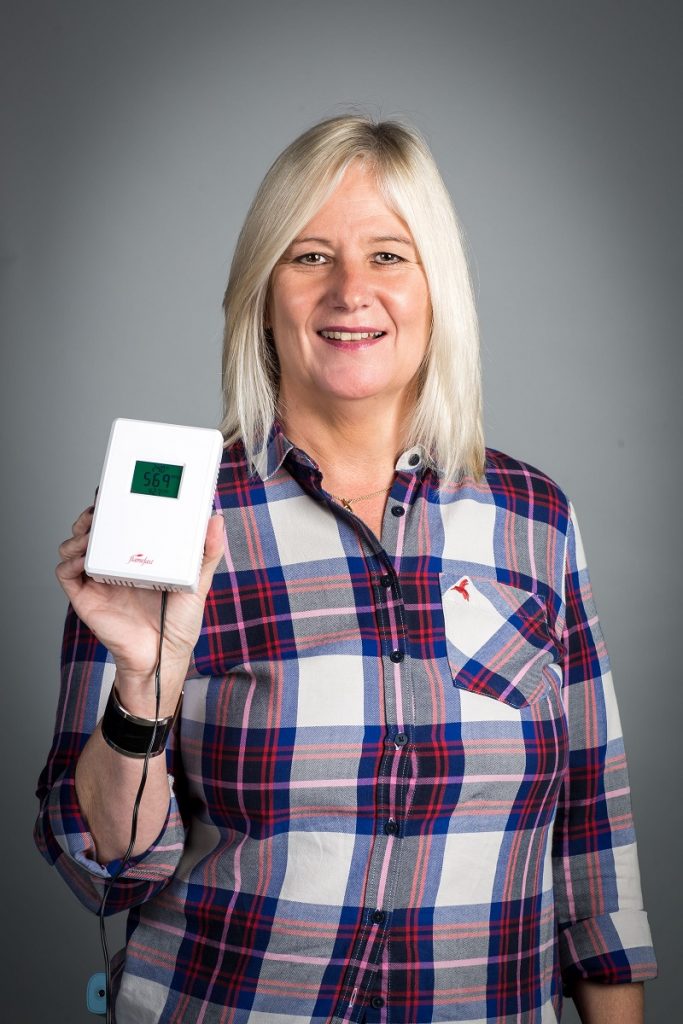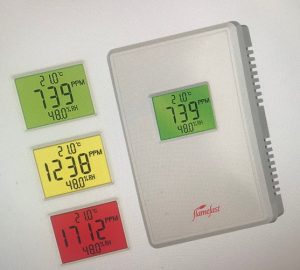By Jane Warburton – MD Flamefast
With some schools closing, and despite varying levels of Lockdown in England, Scotland, Wales and Northern Ireland, the spread of Covid-19 remains a real threat, especially in classrooms.

Jane Warburton MD of Flamefast
A report produced by Sage’s Environmental and Modelling Group (EMG) suggested that fresh air plays a significant role in keeping the virus at bay indoors, and that poor air quality could be highlighted with the use of a CO2 monitor.
The report, which is backed by the Chartered Institute of Building Services Engineers (CIBSE), demonstrates the correlation between poor ventilation and an increase in the relative risk of the airborne transmission of Covid-19, and recommends that ventilation be increased wherever possible to ensure that lower levels of CO2 are maintained.
Continuous monitoring
There is increasing evidence the virus is airborne and there is now a significant focus on ventilation. The guidance advises to increase “air changes”, however the majority of classrooms are naturally ventilated and rely on opening windows, so without the use of a CO2 Monitor there is no means to verify that the required rates are being achieved.
Scientists stated that continuous CO2 monitoring is likely to be a reliable proxy for transmission risk in most environments. Preliminary research suggested that in spaces where the same group of people regularly attend, for example schools and universities, continuous monitoring would be possible as a transmission risk indicator.
The report suggests that multi-occupancy spaces with 20 or more people would see a significant increase in relative risk when carbon dioxide levels exceed 1,500ppm (parts per million).
However low occupancy spaces or spaces with singing, loud speech or aerobic activity will require far greater ventilation rates and should aim to maintain a CO2 level of less than 800ppm, the report states.
Opening of doors and windows
Current guidance to schools is to ‘open windows and doors’ and that thermal comfort is secondary to ventilation, however during winter, in most cases this will not be feasible.
Despite the science, budget constraints in schools have held back the installation of CO2 monitors in classrooms to date, as requests in many instances into local governments have failed to produce any action.

CO2 monitor with the traffic light indicator
Universities are addressing the problem as funding is less of an issue, and Local Authorities in Scotland are responding following the release of their own guidance from CERG as most of the schools still fall under LA control, unlike the rest of the UK where schools have been left to fend for themselves.
As winter draws in, conversations with teachers have supported the argument, with complaints that children are less inclined, or able, to work in the lower temperatures. In many cases pupils are subsequently asked to wear extra jumpers and coats, however it is yet to be seen how effective, sustainable, or enforceable this is.
Traffic light indicator
CO2 monitors, with an easy-to-follow traffic light indicator, are already widely used in universities, schools and offices, and whilst they do not necessarily solve the ventilation problem, they remove the uncertainty and provide the occupants with the information to safely manage their environment.
Opening windows and doors in schools, will reduce the risk of Covid transmission, however it may also increase heating bills significantly. Whilst it is recommended that some windows are always open during occupation, it is not always necessary to open all of the windows all of the time. This strategy helps reduce the relative risk of transmission, but also heat loss thereby reduces heating bills, which may provide a proportion of the cost of the installation of a CO2 Monitor.
By creating a better working environment, it is already well documented that there is an increase in learning ability. In conclusion, although relatively inexpensive, CO2 Monitors should be seen as a long-term investment to benefit everyone, as well as a short-term solution to ventilation issues, as opposed to an unnecessary expense.
For more information visit www.flamefast-gas-safety.co.uk/covid







Recent Comments